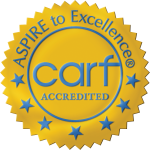Individual drug users aren’t always the only ones who suffer as a result of their drug use. Hikes in the number of infants born with neonatal abstinence syndrome (NAS) highlight the need for programs that treat opiate-dependent pregnant women to reduce the suffering of their newborns. The problem of addiction during pregnancy is growing throughout the U.S., but the biggest crises are taking place in southern states like Kentucky.
The Courier-Journal reports an alarming rise in NAS in the span of just one year. From 2013 to 2014, the number of infants admitted for hospital care for the syndrome in KY rose by 48 percent. In 2014, there were 1,409 infants treated for NAS in Kentucky. NAS occurs in newborns of opiate-dependent pregnant women. It is a form of withdrawal from the substances that were prevalent in the mother’s system. NAS produces a number of painful symptoms for the newborn, including respiratory problems in the worst cases. It requires hospitalization and special treatment for the temporary condition.
Heroin is now the drug of abuse of most opiate-dependent pregnant women
The steep rise in NAS is closely related to Kentucky’s heroin crisis. According to a University of Louisville neonatologist quoted in the above-cited story, heroin is the drug of choice of most pregnant women suffering from addiction. The worst cases of NAS will result from active addictions to heroin or painkillers throughout pregnancy. Heroin abuse can also expose the fetus to HIV and other viruses spread intravenously. Evidence suggests that placing women on opioid medications will provide the best chance for reducing NAS problems after childbirth.
In Tennessee, where the problem mirrors KY’s, 28 percent of pregnant women on Medicaid filled an opioid prescription, according to the Courier-Journal piece. While women might desire to abstain from all opioid substances while pregnant, this will often lead to relapse with a more dangerous drug like heroin. The standard treatment for pregnant women has been methadone maintenance, even though the presence of methadone in the mother’s system will usually result in NAS, requiring hospital treatment after delivery.
More recently, buprenorphine has proven to be a safer treatment for opiate-dependent pregnant women. Studies such as one from the National Institute on Drug Abuse have shown that treatment with this medication results in much milder NAS symptoms. Compared to the results of methadone treatment, infants born to mothers treated with buprenorphine required less medication and were able to taper off more quickly. They finished treatment and hospitalization twice as quickly as those born to mothers who were treated with methadone.
One infant is born with neonatal abstinence syndrome every 25 minutes
While the most extreme problems with NAS are occurring in a group of southern states including Kentucky, Tennessee, Mississippi, and Alabama, national rates of hospitalization for the syndrome are on the rise, too. In 2009, the National Institute on Drug Abuse reported that one baby was born suffering from NAS every hour. More recently, that’s risen to one every 25 minutes. The problem costs the U.S. health care system one and a half billion dollars every year, in addition to the pain experienced by these newborns.
Clearly there is a present need for more programs offering safe and effective treatment for opiate-dependent pregnant women. In KY, fewer than one quarter of all addiction treatment facilities provide treatment for pregnant women. Out of the 71 facilities that do treat opiate-dependent pregnant women, only 10 facilities offer inpatient or residential care. (This number was also reported in the Courier-Journal story above.) The good news is that there is a growing awareness of the needs of pregnant women suffering from addiction. More providers are looking to offer services to pregnant women, but for now there are more opiate-dependent pregnant women than providers are able to treat.
Image by George Ruiz is licensed under CC BY 2.0

